Looking for ideas for fun museums with exceptional art collections that are close to Boston, and other New England attractions? Check out these alluring photos and facts from my recent visit to the wonderful Peabody Essex Museum in Salem, MA!

Why Visit the Peabody Essex Museum?
I first learned of the Peabody Essex Museum (or “PEM”) several years ago, when I saw photos on social media that my friend had taken at the art installation, “All the Flowers are for Me” by the artist, Anila Quayyam Agha.
The moment I saw her pictures of it, I knew I had to be there myself, someday — influencer that she is. As you can see from this photo of me, below, that dream happened! The exhibit was every bit as cool in person as I imagined… but what I didn’t realize was how much else the Peabody Essex has to offer.
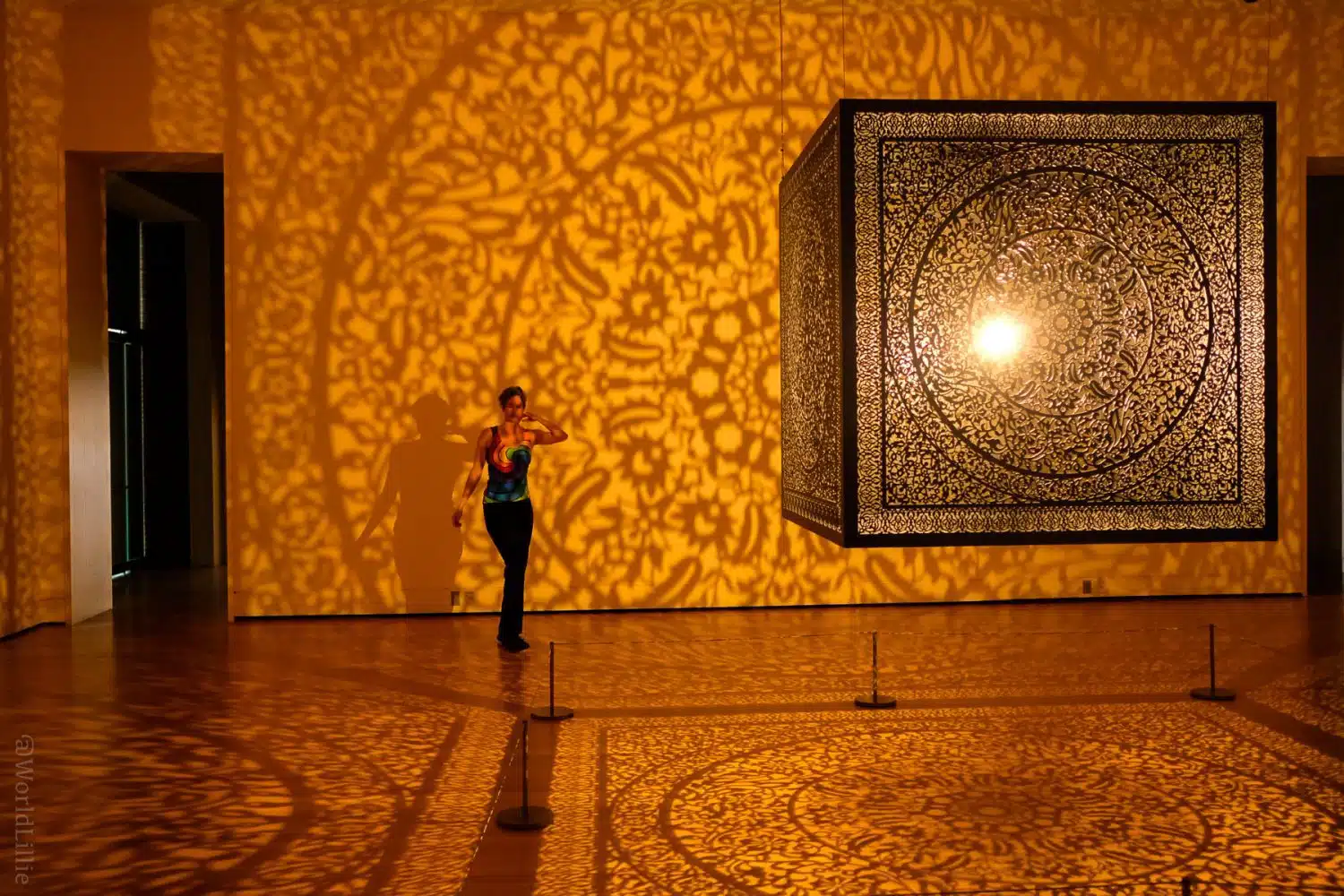
Salem, MA: Witch City
Let’s back up a moment and get some context about the Peabody Essex Museum. The first thing to know is that it’s located in Salem, MA — just an hour north of Boston.
If witches came to mind at the mention of Salem, you’re exactly right: not only was that town the site of the Salem Witch Trials in 1692-3, but the city has now completely embraced the genre, and you’ll see witch hats and stores everywhere… even the entrance to the museum, as shown in the sign I photographed, below!

History of the PEM
The Peabody Essex Museum was founded back in 1799, making it the oldest continuously operating museum in the United States of America! Because it was started by the East India Marine Society (a group of traders who sailed international seas), it was also one of the first U.S. museums to display global art — or in their words, “Natural and artificial curiosities.”
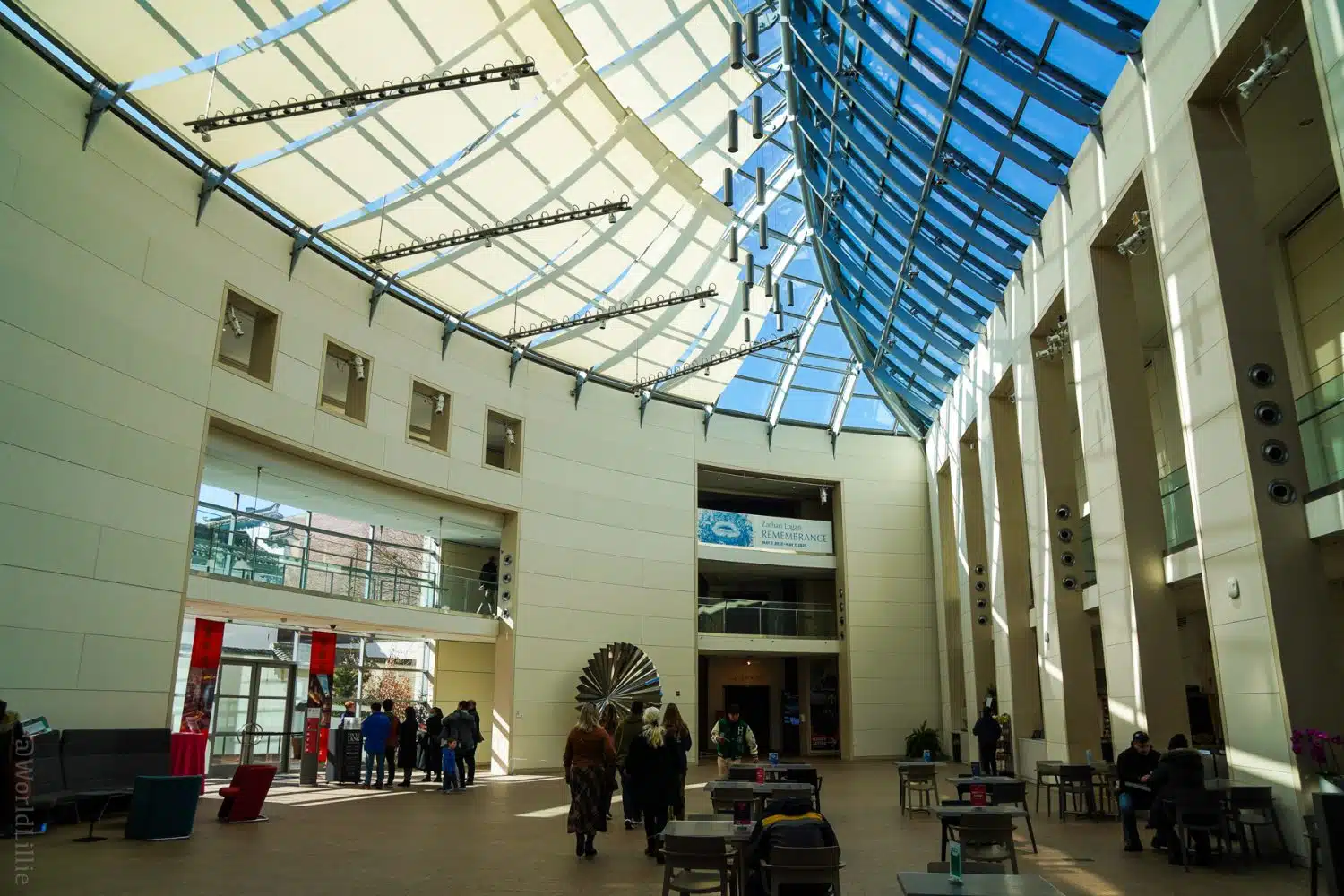
The museum has since undergone so much expansion that in 2003, it was ranked in the top 25 largest art museums in the country — right up there with MASS MoCA. As you can see in my photo above, the newly-constructed ceiling of the main atrium even looks like a sail, as an homage to the boat-embracing founders. Due to the museum’s expansive international vision, the PEM has served to broaden the perspectives of all who walked — and still walk — through its doors.
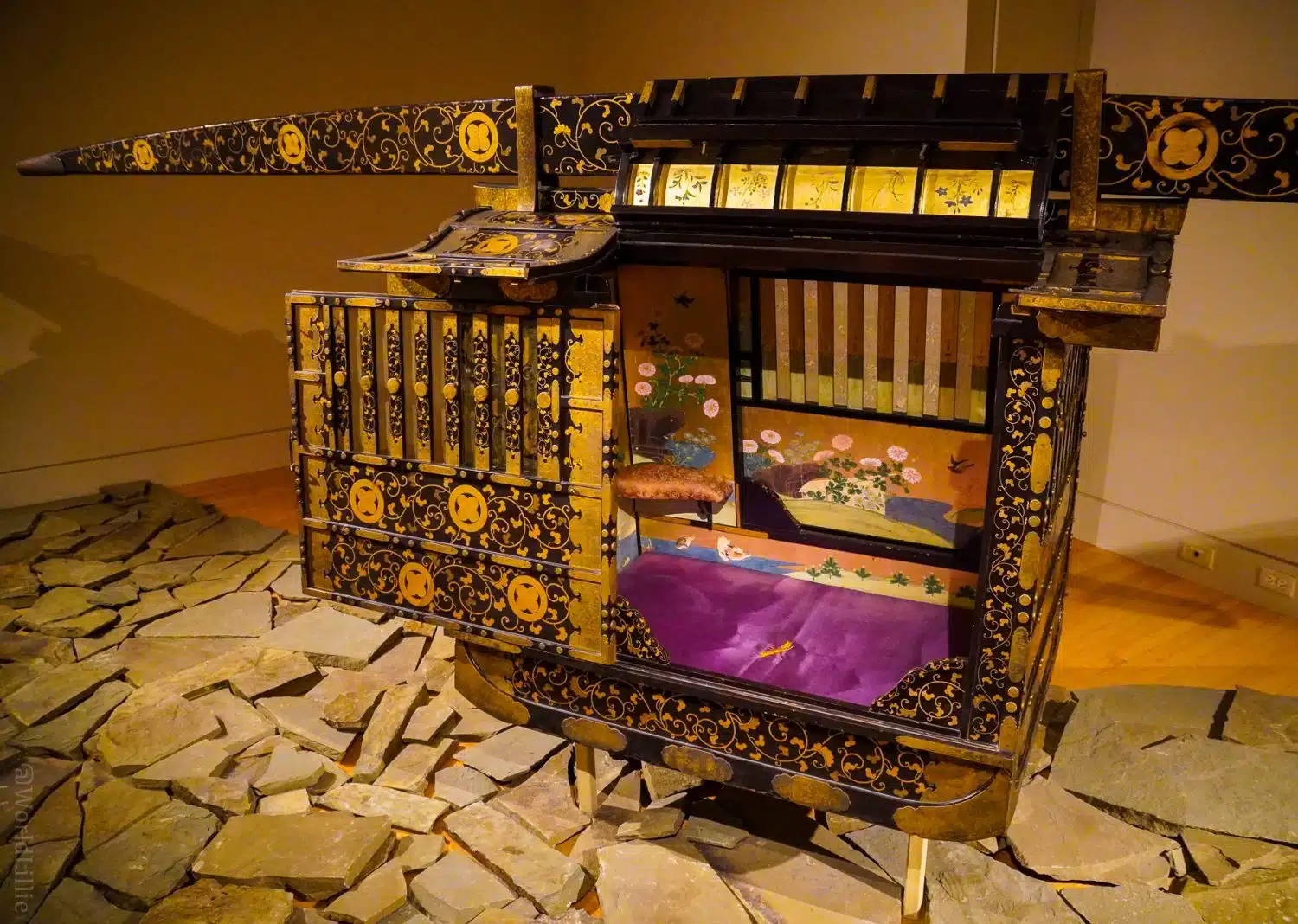
Asian Art, from Historic to Now
The Peabody Essex Museum is particularly known for its exhibits in Asian art which span hundreds of years. In the photos above and below, you can see the wonderful juxtaposition produced by this time range. Above is a palanquin from the Edo Period in 1800s Japan.
Below is a delightful contemporary sculpture by Himalayan artists, Tsherin Sherpa, found just a few steps away from the former piece. Amazing combination, right?
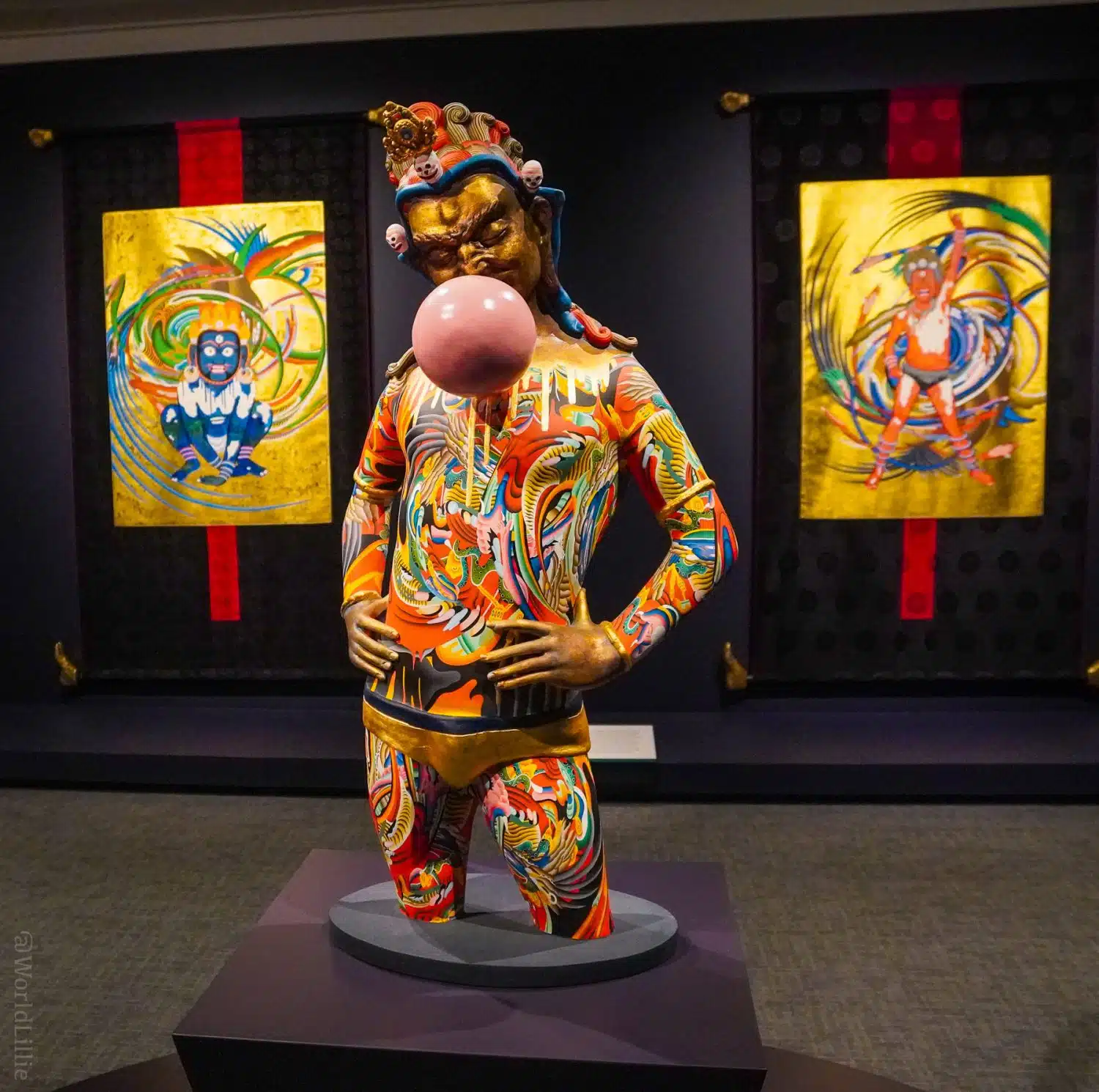
The museum is always changing its temporary exhibits, so new contrasts with its permanent collection are ever-evolving. Bear this in mind if you’re seeking to view a certain work of art, since the photos I took here may be of exhibits that have since moved on — the Sherpa exhibit, for example, is temporary.
A Qing Dynasty Chinese House
Just how extensive is the Asian art collection at the Peabody Essex Museum? Well, there is an entire 200-year-old, 16-bedroom HOUSE imported from China that’s become a part of the collection! Yin Yu Tang now sits nestled against the PEM, and is available for free tours inside. See my photo, below, of the exterior.
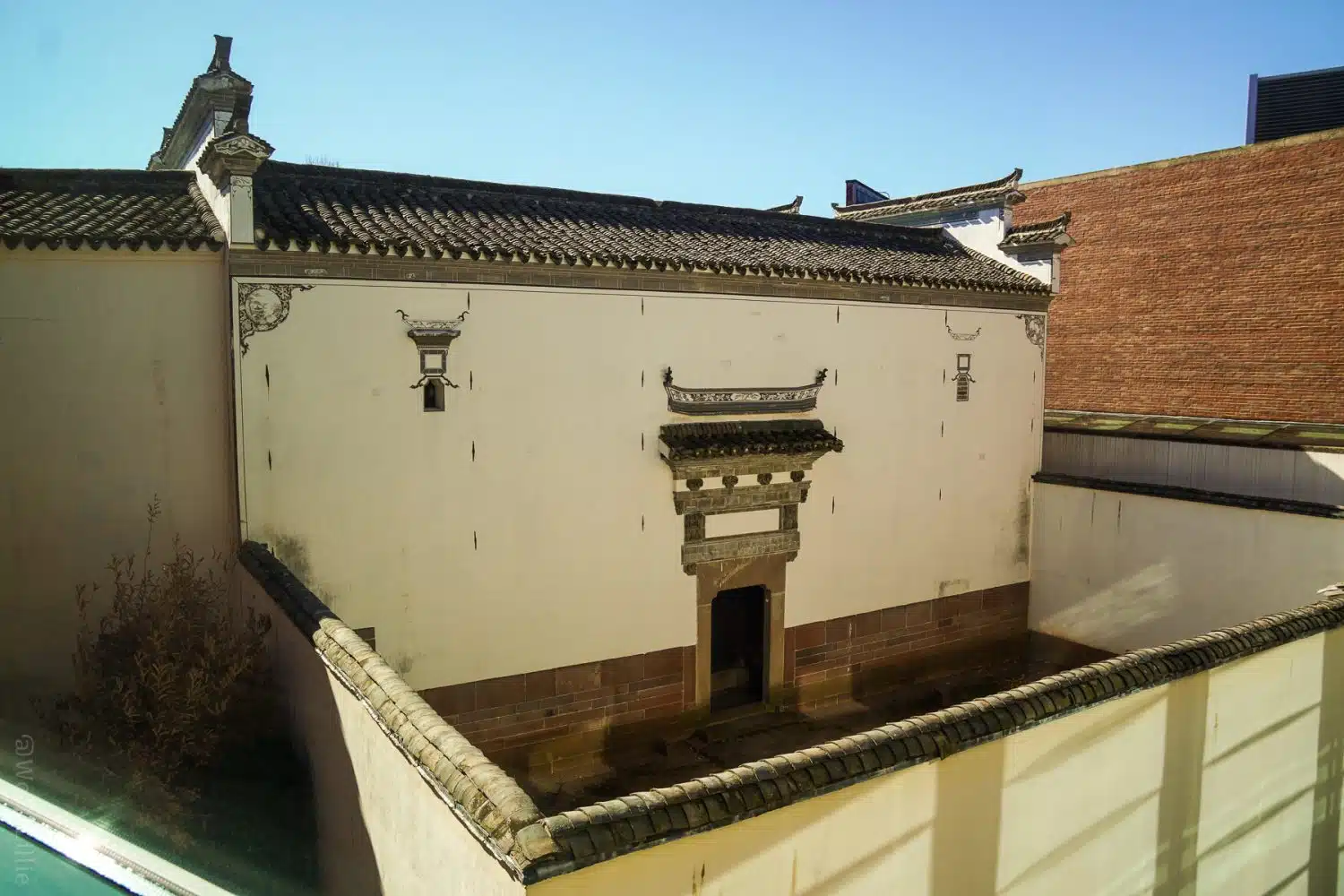
New England Art Stretching Back Centuries
The Peabody Essex Museum also has an extensive collection of historic and contemporary New England art. Its offerings range from traditionally painted portraits, to everyday objects that shine a window into life in the region hundreds of years ago.
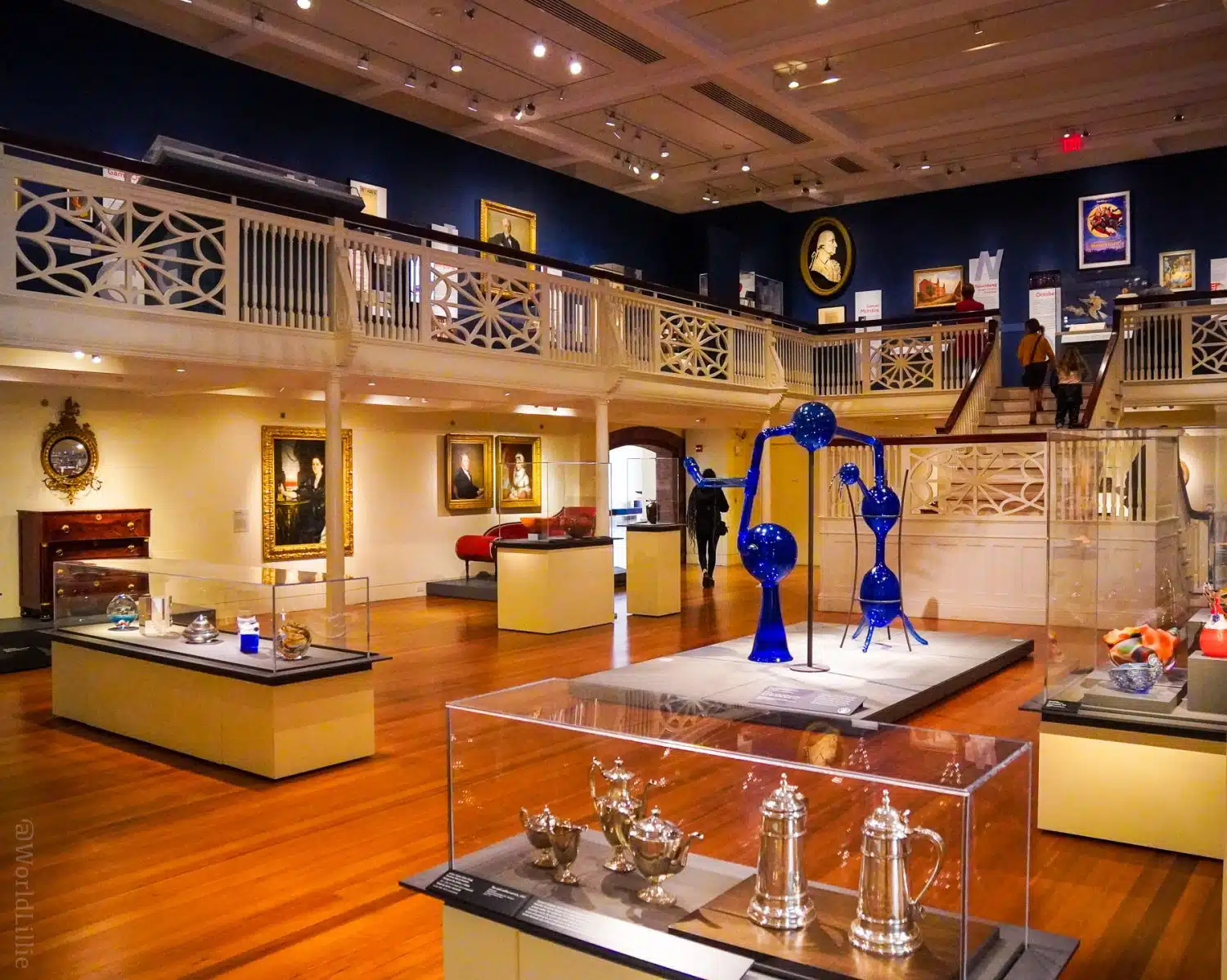
Being a decorative glass art aficionado (special shout-out to the Chihuly Garden and Glass in Seattle, Washington!), one of my favorite pieces of art in the American collection of the PEM is the massive glass paperweight pictured below. It is entitled “Mega Megaplanet,” and was created by Josh Simpson in 1999.
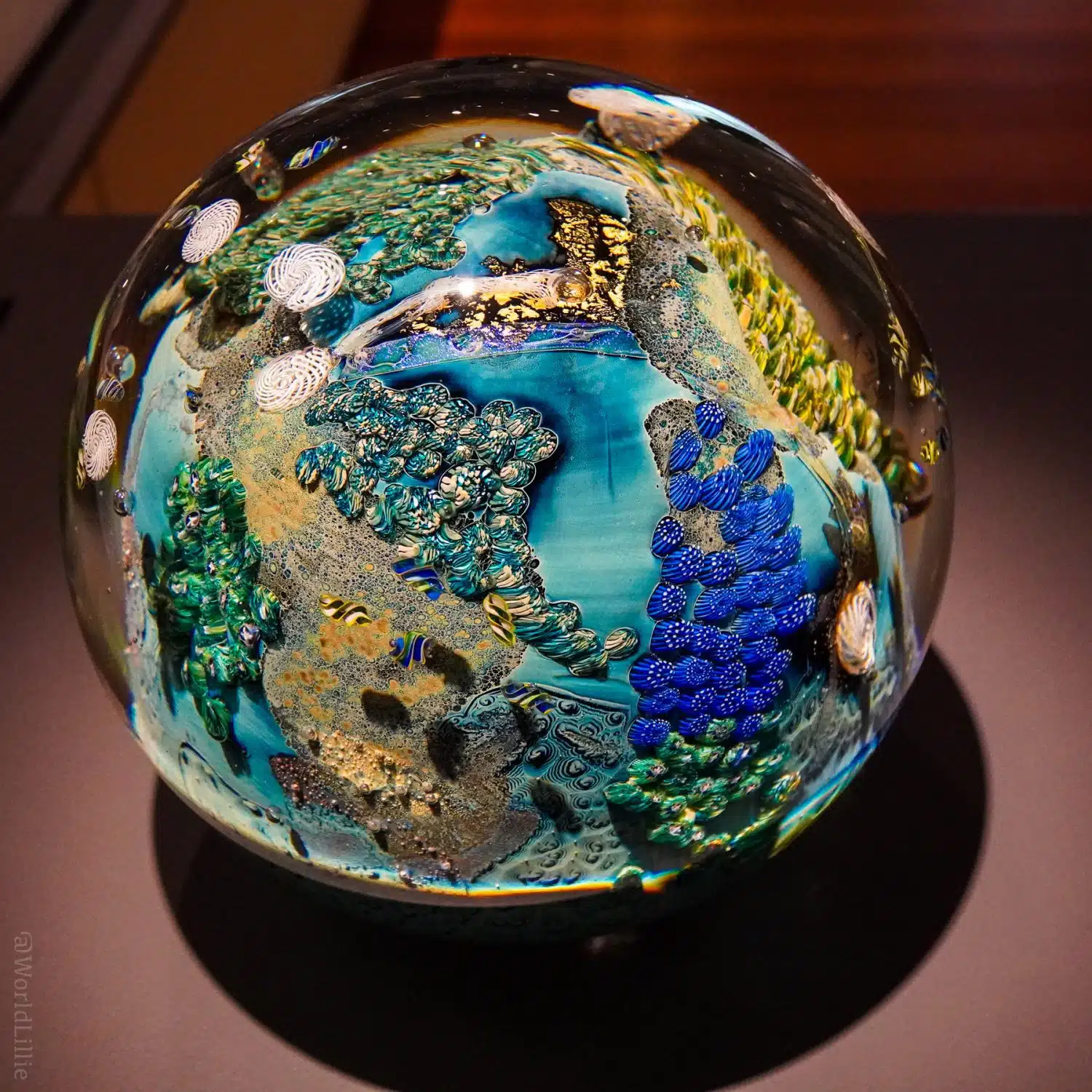
If you like that piece, make sure to check out my article about the phenomenal Corning Museum of Glass in the Finger Lakes region of New York State, and a certain sprawling collection of glass paperweights of Ligonier, Pennsylvania,
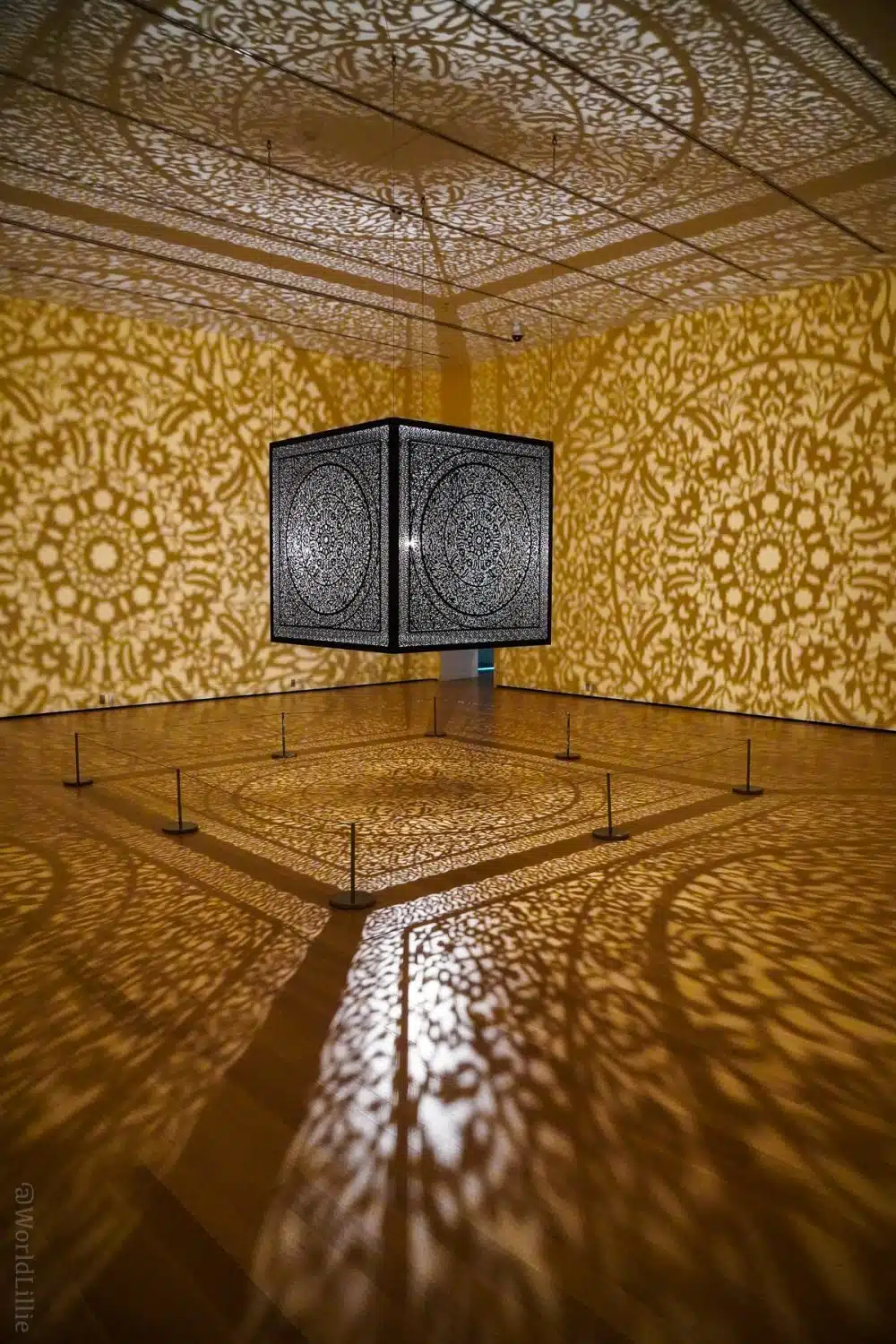
Discounted and Free Entry to the Peabody Essex Museum
Hot tip if you’re starting to get intrigued about the PEM from these photos and want to plan your own visit: There are a ton of ways to get discounted or free tickets! My group of buddies used a combination of methods. (This article isn’t a sponsored post, and no one at the PEM asked me to feature the museum — I just went through normal channels to get free tickets that you can do, too!)
First, the museum has a GREAT list for complimentary admission codes at this link here. Second, many public libraries have free Peabody Essex tickets you can check out at no cost. Big thanks to the museum for being so accessible and inclusive!
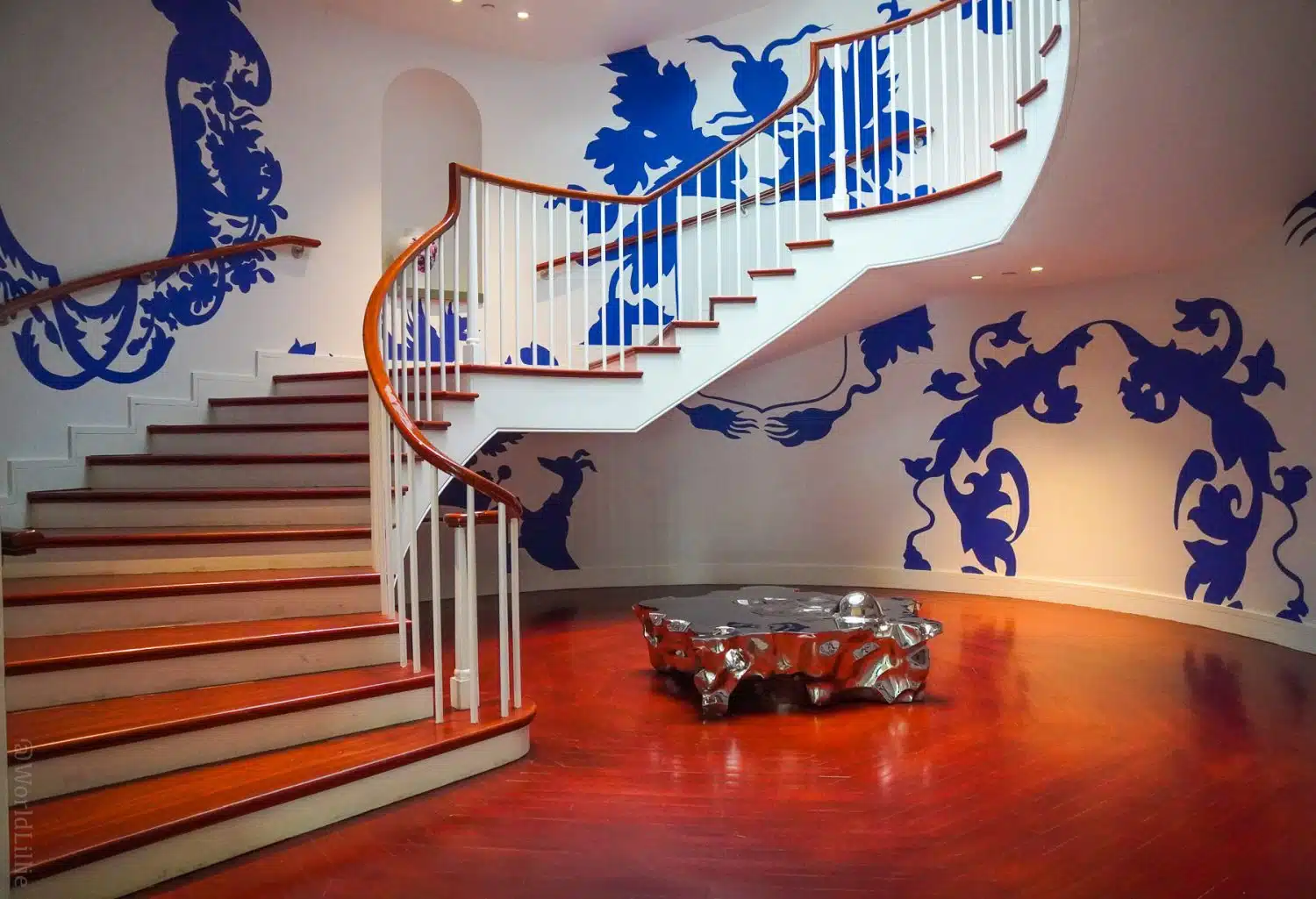
Excellent Museum Architecture
As you stroll through the PEM, I invite you to take a breath and appreciate how the architecture of the museum is a work of art unto itself — and interplays gorgeously with the collection. Above, see the decorated staircase between the buildings. Below, notice how the silhouettes of patrons flicker between the vases.

Pay special attention to the liminal spaces BETWEEN exhibits and rooms. As demonstrated in my photo, below, there are sometimes cracks in the wall where you can glimpse slivers of paintings in the next room — bursts of color or faces that peek out and play with the walls next to you.
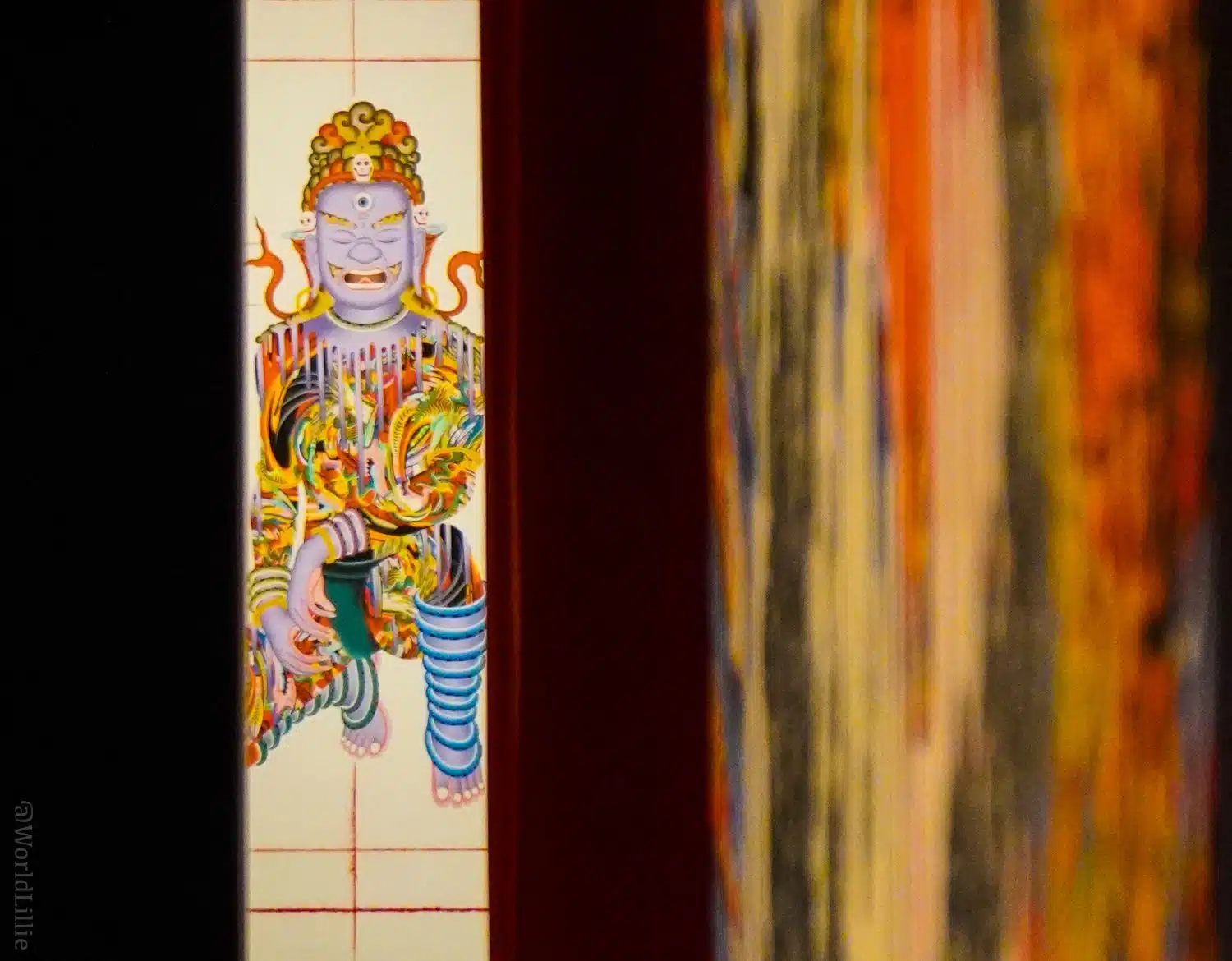
Old and New Juxtaposed at the PEM
In many ways, a central concept of the Peabody Essex Museum is highlighting interplay between objects and ideas that are hundreds of years old, and those from today. Just look at my photo, below, of the walkway between two buildings at the PEM: Modern glass and steel architecture dance with historic sculptures, who almost seem to be gazing up in appreciation through those lovely skylights.
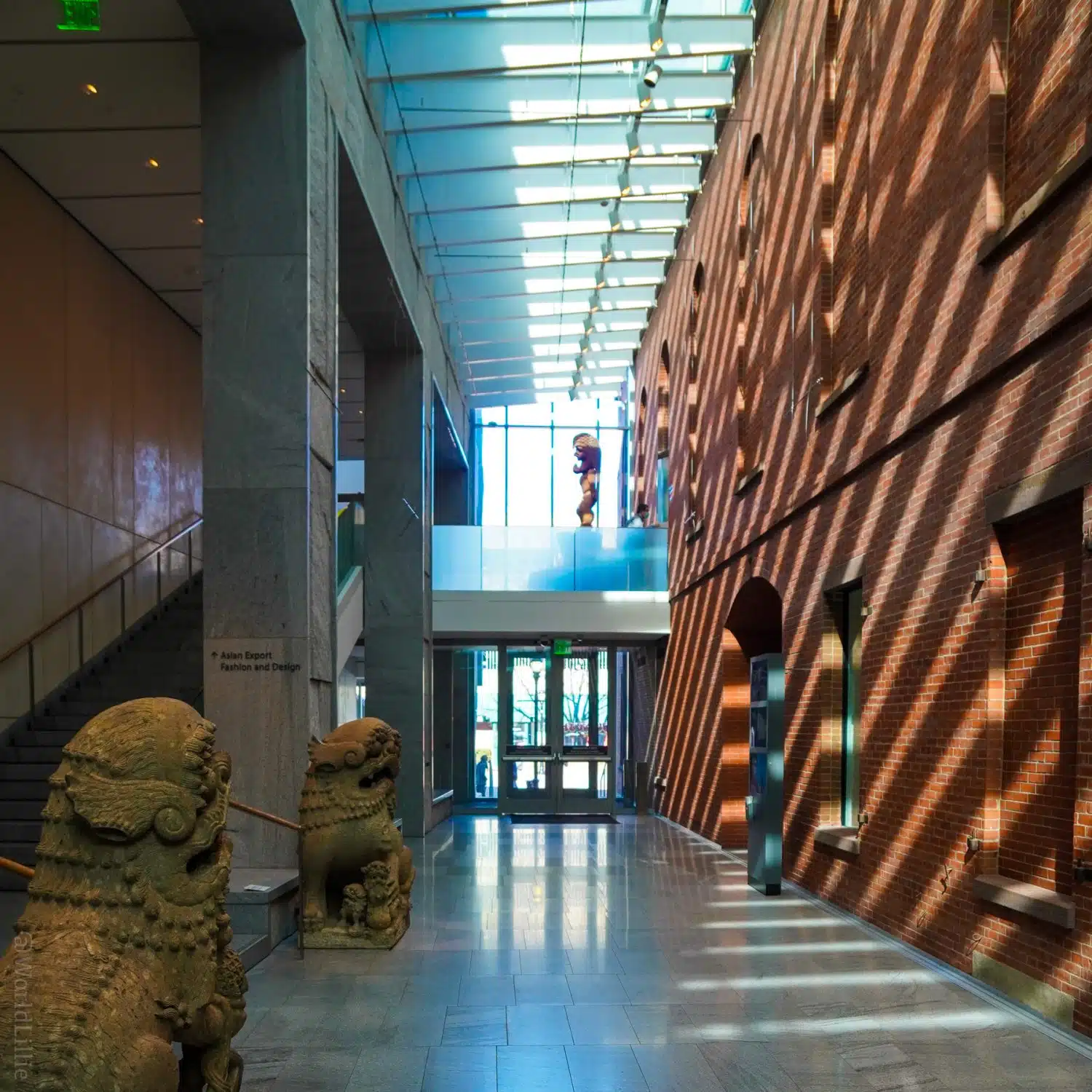
On this old-connected-to-new note, I found the display pictured below particularly fascinating. On the left is an 1838 maritime painting by George Chambers and an amphora from Turkey dated 500-700 CE. Then on the right is the stunning sculpture, “Shipwrecked Armoire with Barnacles” by Valerie Hegarty — which was actually made just a few years ago in 2012! Kudos to the museum staff for so cleverly placing these three objects together.
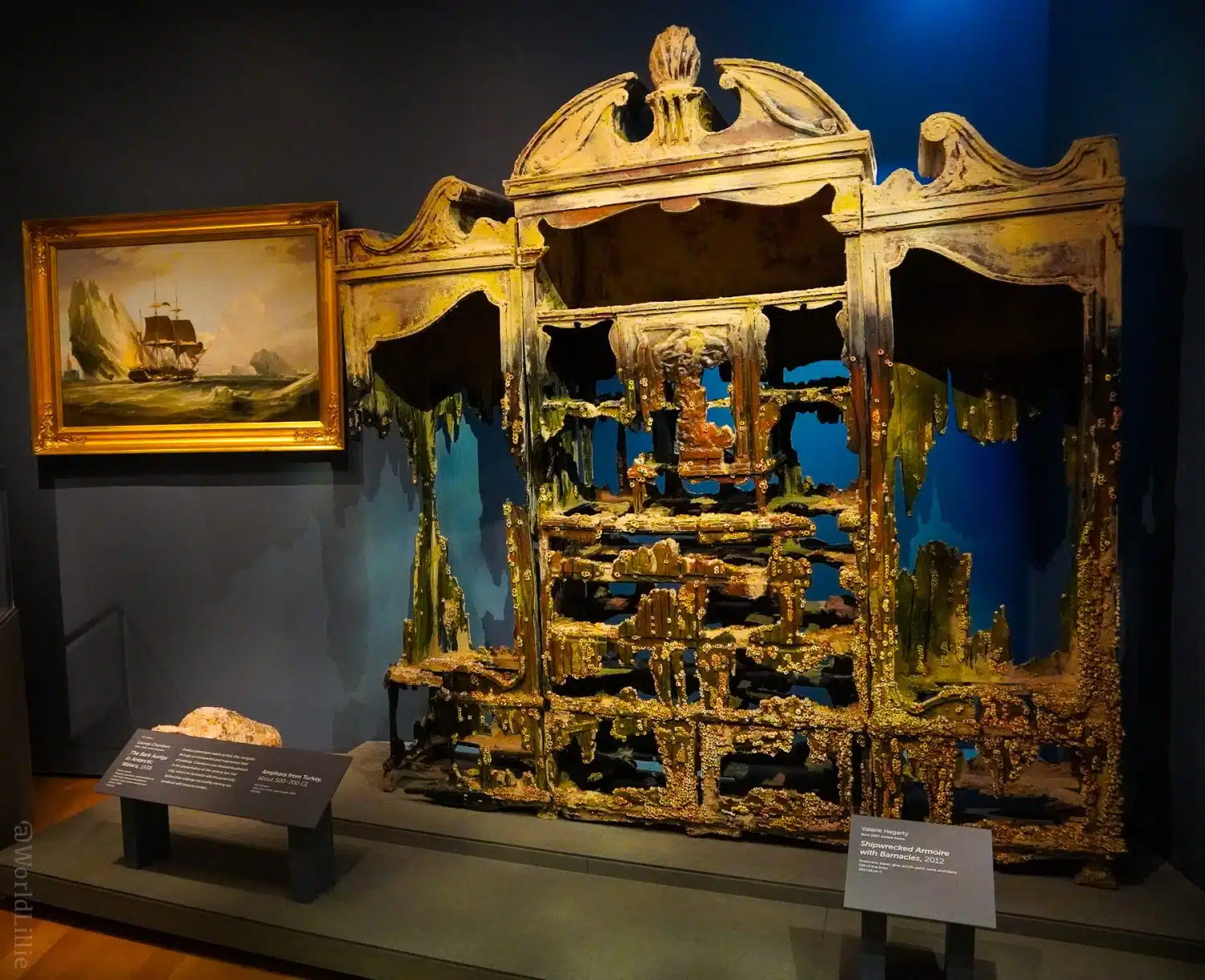
Events at the Peabody Essex Museum
Taking this “across time” interplay still one step further, the Peabody Essex Museum has been at the forefront of museums that invite current performers, artists, and educators to present in the galleries — right next to the historic artifacts. Browse the PEM events offerings and Instagram page for frequent updates. There’s everything from yoga workshops to lectures, to parties.

One of the most exhilarating events I saw them put on took place in the room pictured in my photo below. It was a modern dance troupe, and the interplay between the muscular live bodies, the statues on the wall, and the arched architecture took my breath away!
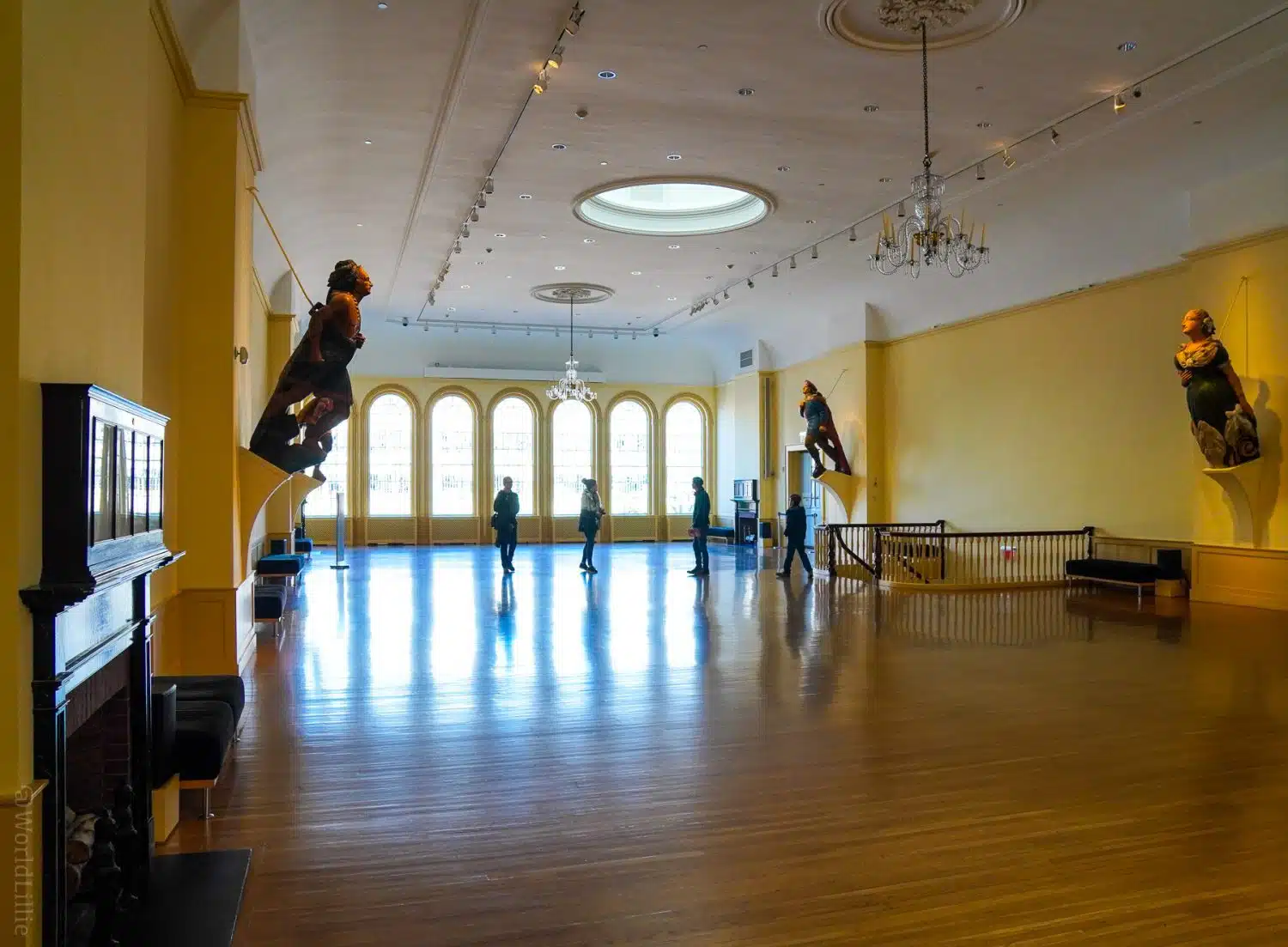
Note: Some links here are affiliates that provide a small commission upon purchase at no extra cost to you.
Where to Stay in Salem?
Ready to plan your visit to the Peabody Essex Museum and Salem, and seeking fun hotels in the area? Though it’s close enough to Boston to do a day trip, there is enough enjoyment to be had in the town to stay for at least one night, if not two.
If that’s the route you’ll take, the classic place to stay is the historic Hawthorne Hotel (click for more info). The Hawthorne is a famous and storied spot that’s right in the center of town, and walkable to all attractions.
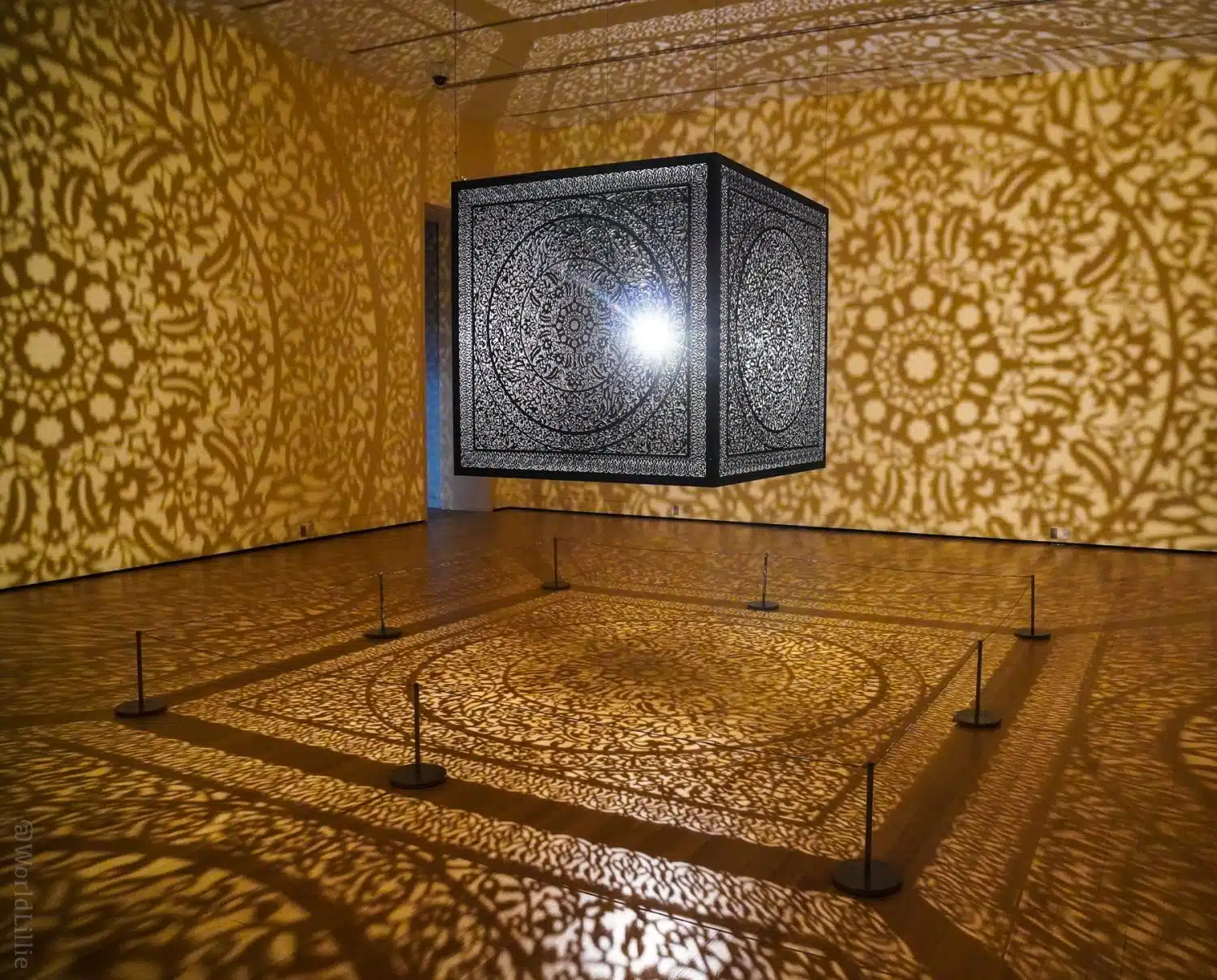
Thanks, Peabody Essex Museum!
I had a wonderful time at the Peabody Essex Museum in Salem, Massachusetts, and highly recommend a visit if you’re in the area. If you’ve been, what are your favorite features? If you haven’t tried the PEM yet, does it seem like a place you’d like to tour? Do share!
Want more about museums? See my photos of the “Quilts in Color” exhibit at Boston’s Museum of Fine arts… and if you want to browse a totally different kind of “museum,” check out the thousands of vintage bikes at Pittsburgh’s Bicycle Heaven!
Thank you to G. Manacsa for taking the second photo in this article.

The author, Lillie Marshall, is a 6-foot-tall National Board Certified Teacher of English, fitness fan, and mother of two who has been a public school educator since 2003. She launched Around the World “L” Travel and Life Blog in 2009, and over 4.2 million readers have now visited this site. Lillie also runs TeachingTraveling.com and DrawingsOf.com. Subscribe to her monthly newsletter, and follow @WorldLillie on social media!
